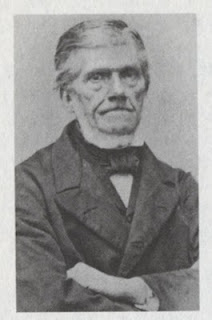DAN PEARSON was working in northern Peru two years ago with his stepson Brian Horsely, supplying gear and food to mining companies, when something caught his eye.
“We were in a hidden mountain valley of the Marañón River and saw some strange trees with football-size pods growing right out of their trunks,” Mr. Pearson said by telephone last week. “I knew nothing about cacao, but I learned that’s what it was.”
For some of us chocolate is an everyday food, relied on much like that morning coffee. It's a very interesting fruit, grown only in a small area around the equator, discovered by the Aztecs and not until the invention of milk powder in the mid 1800s by Nestle, did we eat chocolate.
Chocolate is Native to Honduras. Chemically Theobromine is unique to chocolate and the Koala Nut. In modern medicine, theobromine is used as a blood vessel widener, a diuretic and a heart stimulant. Possible future uses could be in the fields of cancer prevention (from Wikipedia).
The Aztec leader, Montezuma drank his 'Xocolatl' as an aphrodisiac. Don Cortez introduced this aphrodisiac to the Spanish Monarchy in the 1520s. Not until a royal wedding in Spain of a French Princess to a Spanish Prince was Xocolatl (as a drink still) introduced to the rest of Europe. The beans were ground up, steeped in water with sugar. The drink had some of the telltale 'chocolate flavour' we know today but it was sugary and gritty.
The technology to grind chocolate to a finer paste was developed in France in 1732 and not until 1828 was the cocoa press invented by a man named VanHouten.
This process allowed half the fat to be removed from the paste so the drink wasn't fatty and slimy. The Dutch then treated this new cocoa powder with alkali liquid. This gives cocoa powder it's colour, good quality cocoa powder is very dark and reddish.
Frys of England made the first eating chocolate in 1847. They created this new chocolate bar from the by-product of the cocoa powder process developed by VanHouten. It was still gritty and not like the smooth fatty chocolate bars we enjoy today.
In 1875 Daniel Peter of Switzerland was the first to add condensed milk, creating the very first milk chocolate bar. When Nestle invented milk powder in 1879 (aka milk solids), the first mass produced chocolate bar was introduced, milk powder was cheap and a good filler to cut down on the amount of chocolate used.
Lindt then invented the conching method in 1879.
It's a strange looking machine, it grinds the chocolate, sometimes for 24-48 hours with sugar, sometimes with milk solids. This grinding creates heat and thus the chocolate changes on a molecular level and the sugar and milk solids caramalize. This conching method finally gave chocolate that melt in your mouth quality!
By 1900, Hershey was producing the first mass, cheap, chocolate bars. Through industrilization, affordability of sugar and milk powder and the use of fillers to cut down on the amount of chocolate used in each bar, everyone could now afford a little piece of Montezuma's aphrodisiac.
From that point on, the boxed chocolate was developed in Paris by Jean Neuhaus, the filled chocolate "Praline" (pronounced Praline-a) was developed in 1913. The New York Chocolate Exchange was organized in 1925 and chocolate was sold as a commodity.
During World War 1, most chocolate went to the troops and chocolate was rationed until 1953.
Next blog - Part 2: Where it grows, varieties, how it goes from fruit to factory and qualities of chocolate! Stay tuned.



No comments:
Post a Comment